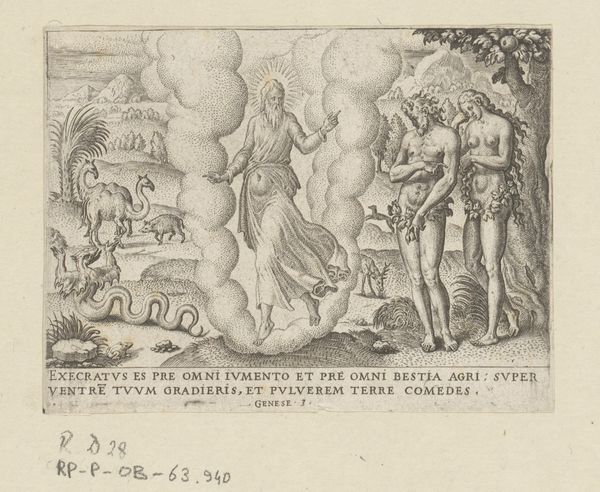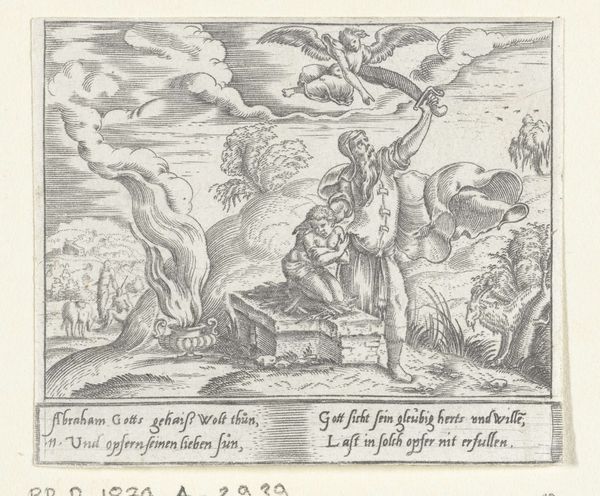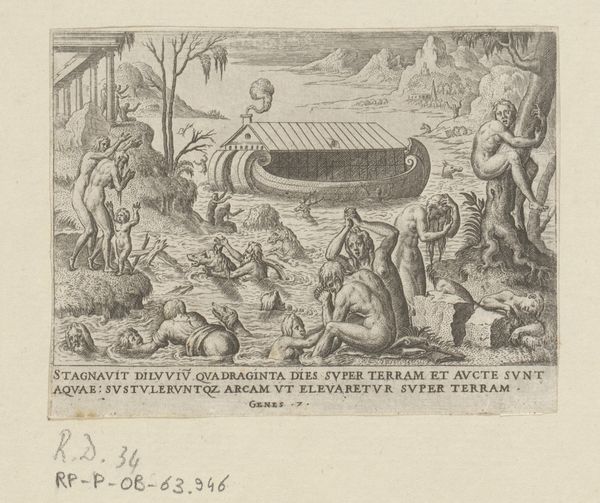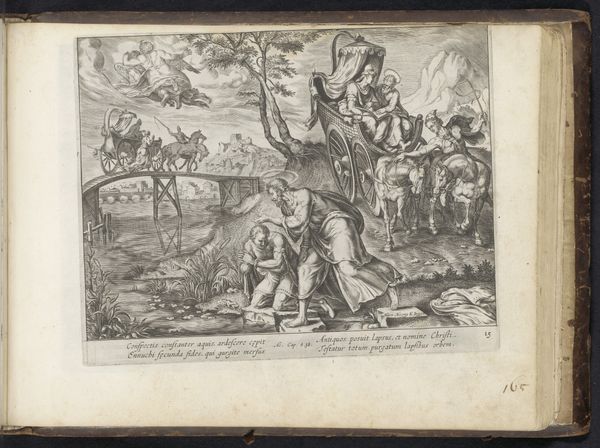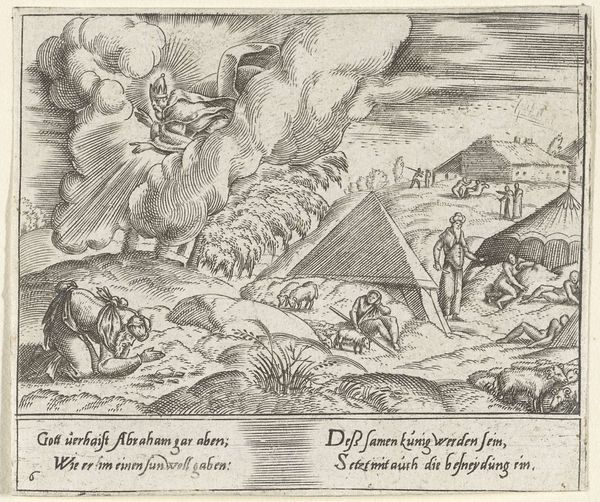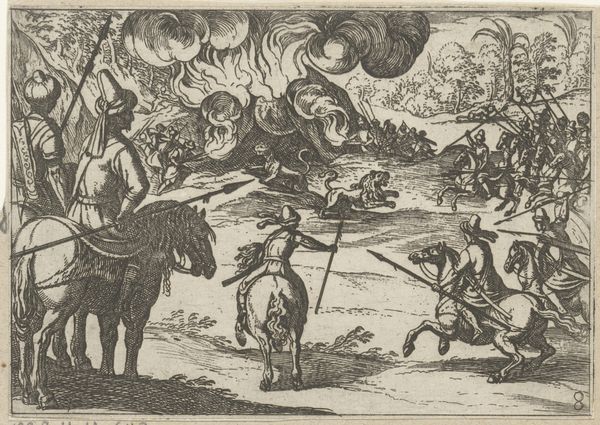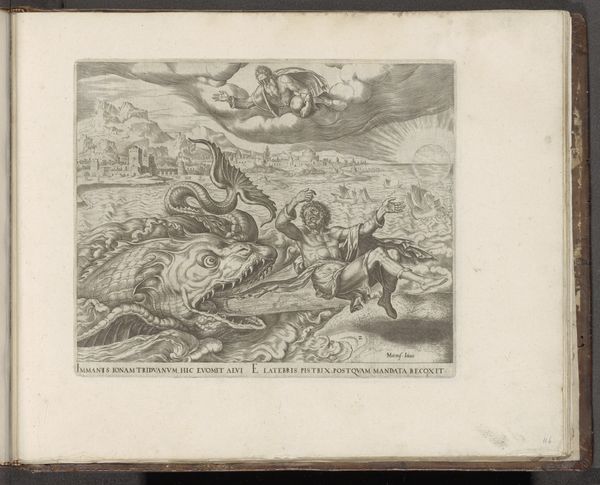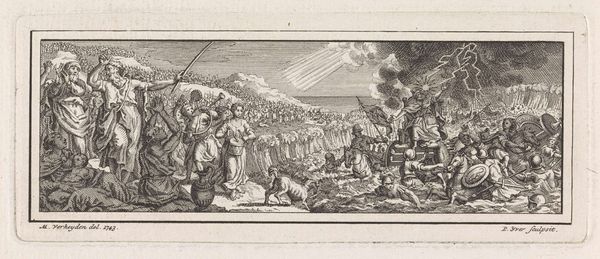
Dimensions: height 79 mm, width 103 mm
Copyright: Rijks Museum: Open Domain
Curator: Delaune’s "Offer van Noach na de Zondvloed," created after 1569, captures a pivotal moment of thanksgiving, doesn’t it? The landscape almost seems to breathe again. But how do you see this print, especially concerning the narrative it presents? Editor: It definitely feels…hopeful? There’s a real sense of renewal. Noah kneeling before this massive fire, with all the animals around. The composition is incredibly detailed. It's an engraving and etching. What strikes me is this relationship between humanity, divinity, and the natural world. Curator: Precisely! Consider the sociopolitical implications of this image in the late 16th century. The Protestant Reformation was shaking the foundations of religious authority. How might this depiction of a direct covenant between Noah and God, bypassing intermediaries, resonate with viewers at the time? What narrative of self-determination is being highlighted? Editor: I guess it suggests a shift towards a more personal connection with faith? It is very Protestant. So, the depiction of Noah's sacrifice—this act of gratitude—can be seen as a challenge to established religious institutions? It highlights this shift of power dynamics from the Church to the individual? Curator: Indeed! Notice the prominent role given to animals. Could this emphasize humanity's restored dominion over nature, as promised in the biblical narrative? The print subtly weaves theological ideas within its imagery. Does that resonate with any contemporary discussions on, say, environmental ethics? Editor: I didn’t initially consider the animals beyond their biblical symbolism, but thinking about environmental ethics now is really thought-provoking. Like, what does it mean to "dominate" nature? I'm seeing completely new layers now! Curator: That’s exactly what analyzing art from an intersectional lens helps us do – connect the historical with the now. It shows how art isn't just reflecting its time, but also shaping conversations across time. Editor: This has been really enlightening. Seeing how deeply embedded these images are within historical and social narratives changes my understanding of art.
Comments
No comments
Be the first to comment and join the conversation on the ultimate creative platform.


